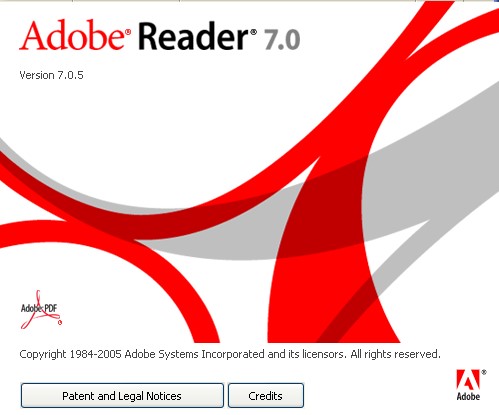IP & SMEs: Taking your ideas to the market

Happy World Intellectual Property (IP) Day 2021!
Intellectual Property (IP) is an intangible asset given to entrepreneurs and inventors to recognize their intellectual creations. To increase the general awareness of IP, World IP day is celebrated annually on April 26th, since 2000. The theme for this year announced by World Intellectual Property Organization (WIPO) is ‘IP & SMEs: Taking your ideas to the market’. As the number of Small and Medium-sized Enterprises (SMEs) have grown considerably in recent years, I would consider this theme as “Just in time”. Many SMEs have great ideas but don’t know how to commercialize them. Hence, owing to the low awareness about IP and its significance in protecting & commercializing their new ideas, the huge potential that this offers is yet to fully tapped/understood among SMEs.
Are you one amongst them who is interested to learn about the process of taking your ideas to the market? If the answer is YES, then this blog would be useful to you to understand Intellectual Property (IP) and how it would be useful to take the ideas to market.
Small and medium-sized enterprises (SMEs) play a major role in job creations and global economic development. While many SMEs are open to new ideas and are keen to experiment, such ideas need to be quickly & effectively transformed into innovative products/services while introducing them into the market.
Unique products/technologies are critical for the success of SMEs to stay ahead of competitors and to expand their market share. These products/technologies need to be protected and hence Intellectual Property (IP) plays a crucial role in ensuring protection and help to monetize these new products/technologies. IP once created becomes a valuable non-physical asset for the business.
IP is a legal right given by the Government to the inventors or creators for their inventions or creations for a specific period of time to encourage their time, cost, and efforts involved in creating it. Basically, these rights are exclusive rights that prevent others from using, manufacturing, selling, and/or importing the invention without the inventor’s permission.
The IP assets can be independently identified, are transferrable, and have an economic life span. They are legally protected and legally enforceable. It helps creators to market their products and/or monetize their creations. Not only SMEs, for any business, but IP is also of great importance to sustain and survive in the business world.
Different creations are protected by different legal rights under IP.
IP is mainly categorized into five categories. They are briefly mentioned below:
-
Patent

A patent is a right given for protecting the inventions or creations usually for a period of 20 years. The basic criteria for the invention are that it should be novel (across the globe), has technical advancement/inventive step, and has usefulness in industries. The invention can be a new product, manufacturing process, new pharmaceutical/chemical composition, introducing new features in a smartphone, new devices for performing specific operations, etc. One example of the patent is United States Patent No. 6474095 which discloses a collapsible container designed for keeping the contents cold.
Trademark (represented as ®)
Trademark is a right given for protecting goods & services of a company / a person usually for 10 years period of time (+ every 10 years renewal). For example, a trademark can be a letter, word, brand, logo, slogan, or its combination, etc. Examples are Logos of LG, Nike, and Intel.



Copyright (represented as ©)
Copyright is a right given to creators of literary, dramatic, musical, and artistic works and producers of cinematograph films and sound recordings. Usually, it lasts for 50 – 70 years (varies with respect to country) after the death of the author. A well-known example is a book.

Designs
Design registration is a right given to ornamental designs i. e. visual aspects of a product and without any utility or functionality of the product. These designs are judged solely by the eye. Depending on the country, the designs are protected as Industrial designs (valid for 10 years and can be renewed for 5 years) or design patents (valid for 14 years). One example is US design patent no. D819892 received for the design of a helmet.
Trade Secrets
Some confidential data or information are important for business and cannot be protected by any of the above IP means. Such information can be protected by Trade Secrets. Generally, Trade Secrets are preferred over patents when the invention is not qualified for patent; when the secret can be kept long run (i.e., beyond 20 years) and in case of reverse engineering is not possible, etc. One best-known example is Coco-cola’s recipe that is kept as a trade secret to date.
Also, it is to be noted that a single invention/product can be protected under one or more IP rights. A good example is Adobe:


While knowing in detail how the IP enables SMEs to protect their innovations and help in commercialization, one needs to also know the steps to be followed by SME while developing the idea/product and entering it to the market.
Let us consider that you have a new idea and don’t know how to launch it in the market.
Here are some basic and important steps to follow:
Step 1: Idea conception and Analysis

Once you have an initial idea, it is time to get down to the specifics of the idea in detail. Hence, you need to formalize your concept with relevant details like technical information, illustrations, a brochure about the possible specification. Before that, it is better to analyze the idea in such a way that it answers the following questions: whether the idea would constitute as an invention (i.e. the idea is new/unique has technical advancement), what is an end product, demand for the product, how the product is going to be developed/made, how it will work, what is the target market, who the targeted audience is, how can they reach the audience, what is the best time to sell, what quality do the customers require, what are the similar products and patents and how does your product idea differs from the existing products and patents, etc. Thorough market research and patent search are hence highly recommended before proceeding with the next step.
Based on the research results, you may need to improve and re-evaluate your product, if required.
Also remember to keep a record of all the work progress details of the invention with the date in a logbook as that would also be an important factor and might be useful to prove that the idea is your own creation at a later point in time.
Step 2: Develop a Prototype
Once you ensure the feasibility of making, marketing, and patenting possibilities, you can develop a good working prototype of your product, as much as possible, with the available sources/materials, to demonstrate the product concept. In addition, it could even be a basic drawing.
At this stage, you may also decide whether you will be manufacturing the product yourself or outsource the manufacturing to partners for a fee. You could also explore possibilities of licensing it to another company in exchange for royalties.
Step 3: IP Protection

After you have completed the necessary research and prototype modeling, the product and its related materials are to be protected under the respective IP rights.
Filing a patent application in the national office / regional office is the first step towards securing a patent in a particular jurisdiction. For the filing process, you need to prepare the patent application, necessary drawings and fill up the official forms. You can file the patent yourself (either online or offline depending on the filing country). In case, you want to protect your product worldwide or in many countries, you can also opt for International filing or Conventional filing routes.
Apart from patents, the unique brand names and images of the product can be protected by trademarks. Similarly, the brochures, specifications, website content, and images can be protected by copyrights and the unique design of the product can be protected under design registration.
The problem here is that many SMEs are unaware of what needs to be protected, how it needs to be protected, and when it has to be protected. For example, some may file a patent after they have launched the product in the market. It is not the right decision as the patent will be rejected if the invention/product is already publicly available by any means, which is one of the basic criteria for the patent qualification. Some countries may provide a grace period for filing the patent after publication and some may not provide such time. You can check the importance of the grace period in detail here. So in order to get maximum patent protection, you need to file at least a provisional patent at the early stage of the product development to secure the earliest priority date.
In another case, let us consider you have filed the patent and you think it is ok to proceed with the product launch. Actually, before commercializing, a comprehensive freedom-to-operate kind of analysis is a must.
Also, think about the associated costs which would go waste if (i) the patent office rejects your patent or (ii) there is patent litigation filed by third parties in the future. As you are investing so much of your time, energy, and costs in the product, it is important that you do it right by reaching out to the appropriate people.
Hence, it is recommended that you consult with a professional expert like an IP consultant and patent & trademark attorney before any legal proceedings. The appropriate guidance will enable you to take the correct decision at the right time. Choosing the correct partners in this IP field helps you to plan the product effectively, ensure your product gets protected, saves time, and also offers cost savings.
Moreover, many SMEs worry about the cost when it comes to investing in IP protection-related activities. But, according to me, it is worth investing the money in IP which in turn yields higher profits (i.e., multiple times of their investments) if properly protected and used. Also, in many countries like India, the Government is offering many financial benefits to SMEs like reduction in patent filing charges and also provides a subsidy to file the patent in India and other countries to encourage the innovations.
Step 4: Commercialize and test your products

Draft a simple business plan and start manufacturing/developing the products on your own. Connect with potential partners in your local area or go online to take support for some of your processes, as and when required, with clear legal agreements. Testing your products on a continuous basis during and after the product development and commercialization helps you to meet customer needs and satisfaction.
You may also want to license or completely sell the IP rights of your product. To do so, you need to do a detailed analysis to find the exhaustive list of potential licensing prospects i.e., a list of companies who are already manufacturing and selling products similar to yours. Prepare licensing/assignment agreements and proceed with proper transition.
Step 5: Marketing your products
Marketing and sales are important tools for each and every business. Try to market and increase sales as much as possible means. A few popular means are email marketing or publishing in any social media, online websites, and newspaper, etc. To increase the sales performance, simple & cost-effective CRM tools for small businesses like HelloLeads can also be preferred. In addition, merchandising can be done i.e., trademark, industrial design, copyright, or patent information used on a product to attract customers.
After going through this blog, I hope you have all the necessary information to go ahead and protect your ideas/inventions. Wish you all the very best in your success.
Once again Happy World IP Day to you all.
Continue to Stay Healthy and Stay Happy…












0 Comments